
FOURTH QUARTER, NOVEMBER 2013 VOLUME 27, NUMBER 10

By Dave McCracken
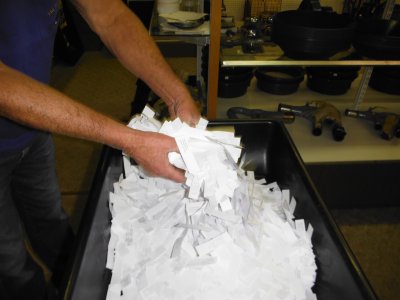

This drawing was for three ounces of mostly nugget gold which Rich Krimm and I mined together along the bottom of the Klamath River during the 2013 season. The drawing took place just before closing time in our offices in Happy Camp on 8 November. Because she had no personal interest in the outcome, we asked Connie Rasmussen from the gift store next door to draw the tickets. In addition to our staff, eight people were present for the drawing. One of them turned out to be a prize winner. Here are the winners:
One ounce of gold: Guy Congdon
Quarter-ounce of gold: Michael Crihfield, Steve Sharp, Scott Atkison & James Barbour
One pennyweight of gold: Jeff Hight, Frederrick Sanders, Donald Flickinger,
Jason Andrews, Michael O’Connell, Mark Bottcher, Ronald Sawyer, David Hook, James Rogan, Bernard O’connell, Bill Wright, Sandy Drake, Jayson Nelson, Les Martin, John Evans, Robert Sonnenburg, Larry Reiter, Gene F Oliver, Gerard Welch & Scott Atkison.
Here is some video that was captured during the drawing:
I want to give a heart-felt thank you to everyone who participated in this fund-raiser. I was really biting my nails, because there did not seem to be very much interest up until the last several days. The girls in the office say the volume of contributions streaming in over the phone and Internet during the last few days required them to bring in two extra office helpers to process everything in time for the drawing! On the larger scheme of things, we can count this fund-raiser as another big winner for small-scale miners.
Congratulations to all the winners! Those beautiful nuggets of gold are yours, now. I hope you appreciate them as much as Rich and I did as we recovered them off the bottom of the Klamath River.
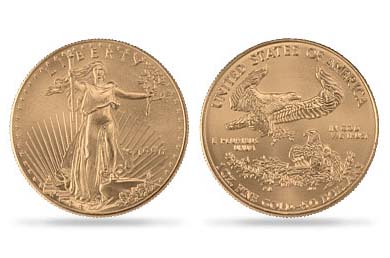
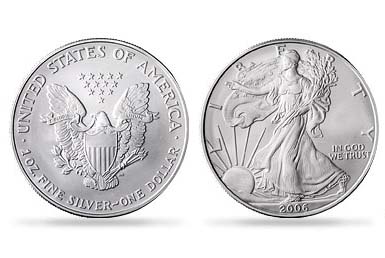
Any contributions received after the time of the drawing will automatically generate tickets for our next prize drawing, which will be for 15 American Gold Eagles (3 ounces of gold) and 10 American Silver Eagles (10 ounces of silver). Our next drawing will take place at our offices in Happy Camp on Friday afternoon, 28 February 2013. You do not need to be a member of our organization to participate. You do not need to be present to win. Our office will automatically generate a ticket in your name for every $10 legal contribution we receive ($100 would generate 10 tickets). There is no limit to the size or frequency of your contributions, or to the number of prizes you can win.
Legal contributions can be arranged by calling (530) 493-2012, by mailing to The New 49′ers Legal Fund, P.O. Box 47, Happy Camp, CA 96039, or you can do it online by clicking here:
Legal Update
We have some exciting plans on the table concerning how we will keep underwater mining going in California for the upcoming season. Please stay tuned for more details when the timing is right.
Meanwhile, I am very excited to announce that the Third Appellate District of California has agreed to consider our federal preemption argument in the Brandon Rinehart case. Many of you will recall that Brandon was cited last year for operating a suction dredge in California without a permit. With financial assistance from PLP and others, Brandon hired our attorney, James Buchal, to defend against the criminal citation. Brandon’s defense was largely based upon our federal preemption argument in San Bernardino Superior Court that the State does not have the authority to prohibit suction dredging, and that their refusal to issue a permit amounted to a prohibition. The judge in that case rejected the preemption argument on the presumption that we would appeal to the Appellate Court.
Now that the Appellate Court will consider federal preemption, we are on a fast track to get this very important issue decided. James Buchal did a fantastic job in presenting opening arguments. Those can be found right here. I encourage you guys to read them, because they are very enlightening. I suggest if we were able to get them properly in front of a federal judge (tried and failed), we would have overcome California’s moratorium several years ago.
In the event that we win the federal preemption argument, my guess is that suction dredge permits will again immediately be available in California. This, because a judge will have ruled that we can dredge if California fails to issue permits. The State’s Answer is due in November. Then we will submit a Reply. It is impossible to predict how long it will take the Court to then issue a Decision. But it is possible it could happen before this next season. We have offered to provide financial assistance to pursue the preemption argument in the Appellate Court, since that outcome is likely to resolve many of the unsettled matters in San Bernardino Superior Court.
The State of Oregon has passed a similar statewide moratorium (SB 838) on suction dredging (as California’s), except that it does not take full effect until 2016. However, the new law does affect the 2014 and 2015 seasons in several very important ways:
1) They are reducing the number of suction dredging permits to 850. This is approximately down to a third of the number of permits issued during the 2013 season. So the big question is who will get the permits? State officials are floating an idea to create a point system, providing a single point per applicant for each of the past years back to 2006 that an applicant held an Oregon suction dredging permit from DEQ or State Lands, and another point for each of the past years back to 2006 that the applicant held a federal mining claim in his or her name. Those with the most points will be given priority. This was the idea Oregon State Lands was considering about a month ago during public meetings. They will come out with a final plan before the end of this year.
2) The new law only allows the operation of a suction dredge between the hours of 9 am and 5 pm.
3) Suction dredges cannot be operated within 500 feet of each other.
4) No suction dredges may be left unattended on the waterway. This is generally being interpreted as a requirement to remove all dredging equipment from the waterway every evening.
All I can say is that our leaders have clearly lost their way since it is only productive economic activity that provides the foundations for a free and prosperous civilization! It is very unfortunate that Oregon would desire to close off some of the most fantastic small-scale mining opportunities in the world!
Fortunately, we have our federal preemption arguments to (hopefully) overcome this nonsense in Oregon. To a large degree, the very same arguments we are using to try and overcome California’s moratorium will also apply to Oregon. How can a State promote mining (which is a mandate from congress) when they require a miner to remove his mining equipment from his work site every day? Or when a miner is prohibited from operating a motor at times when anyone else is allowed to do so?
Because we are getting so much support from you guys on our legal fund-raining events, we are already coordinating with our attorney to help launch a legal challenge to this new law in Oregon. Having learned the hard way in California, we will be more careful this time on how we position the challenge in front of a federal court. Please stay tuned for the fireworks!
Meanwhile, however Oregon decides to issue permits, if you want to operate a suction dredge there for the next two seasons, we suggest you submit your permit application to Oregon State Lands in early January.
Weekend Project Schedule for 2014
Our best high-banking opportunities remain along our extensive properties on the Klamath River in northern California. Therefore, our Weekend Group Mining Projects will take place during 2014 near our headquarters in Happy Camp. They are scheduled as follows: May 31 & June 1; June 21 & 22; July 12 & 13; August 2 & 3; August 23 & 24. These events are free to all active Members, and everyone is encouraged to attend. Please contact our office in advance to let us know you will be there: (530) 493-2012.
All of the 2014 events are expected to happen on or near our famous Mega-Hole property at K-15A. There is plenty of free camping for members on this property, where it is just a walk to where we will be working. There are also private accommodations in Happy Camp, which is only about 12 miles away.
Sign up for the Free Internet Version of this Newsletter
We strongly encourage you to sign up for the free on line version of this newsletter. The Internet version is better. This is because you can immediately click directly to many of the subjects which we discuss; because the on line version is in full color; because we link you directly to locations through GPS and Google Earth technology; and because you can watch the free video segments which we incorporate into our stories.
Signing up also places you on our Political Action Team. Things happen so fast these days; it takes too long to organize political action through the U.S. mail. As an example, just two years ago, in concert with other mining organizations, our Internet Action Team killed anti-mining legislation in Oregon in less than a week. All of these future battles will be organized over the Internet since it is so much faster. Please join us in the battle to maintain our remaining freedoms!
Sign up for our Free Internet Newsletter!
The New 49’ers Prospecting Association, 27 Davis Road, Happy Camp, California 96039 (530) 493-2012 www.goldgold.com



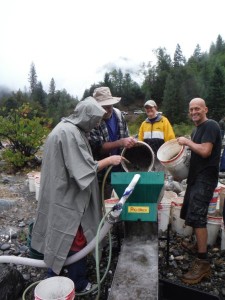
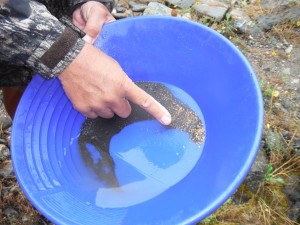
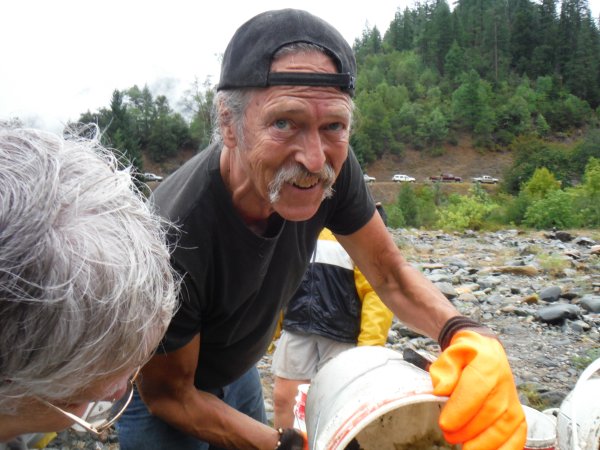 There was no sign of rain out there on Saturday. We always begin with a demonstration for all the participants what hard-packed material looks like. The existence of hard-pack in the top layer shows us what has not already been worked by others before us. Then we provide a very thorough demonstration of how to gather
There was no sign of rain out there on Saturday. We always begin with a demonstration for all the participants what hard-packed material looks like. The existence of hard-pack in the top layer shows us what has not already been worked by others before us. Then we provide a very thorough demonstration of how to gather 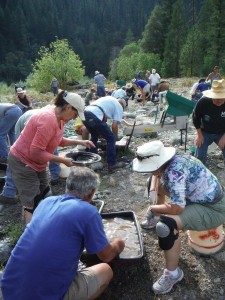
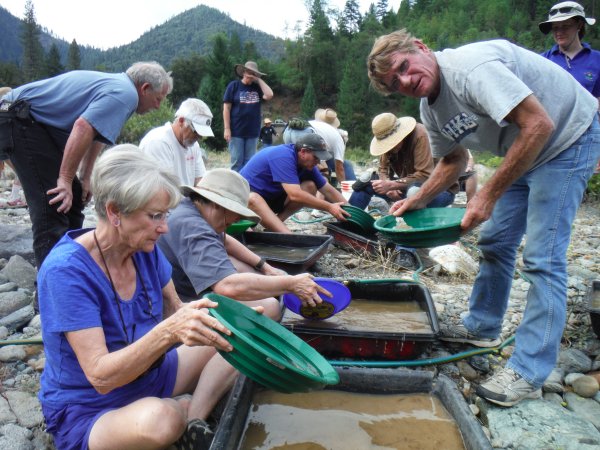
 Since I am the one who does the gold split on Sunday afternoon, and I always like to send everyone off with a healthy pinch of gold, once I finish my demonstrations out on the gravel bar on Saturday afternoon, my entire focus changes to finding a good gold discovery. I don’t make the discovery on these projects. This is something the participants must do. My part is more about providing encouragement, maintaining a sense of hope, and waiting for the magic moment of discovery. That moment of discovery is always joyful for me. It is a reminder of how lucky I am to have a job that I really enjoy.
Since I am the one who does the gold split on Sunday afternoon, and I always like to send everyone off with a healthy pinch of gold, once I finish my demonstrations out on the gravel bar on Saturday afternoon, my entire focus changes to finding a good gold discovery. I don’t make the discovery on these projects. This is something the participants must do. My part is more about providing encouragement, maintaining a sense of hope, and waiting for the magic moment of discovery. That moment of discovery is always joyful for me. It is a reminder of how lucky I am to have a job that I really enjoy.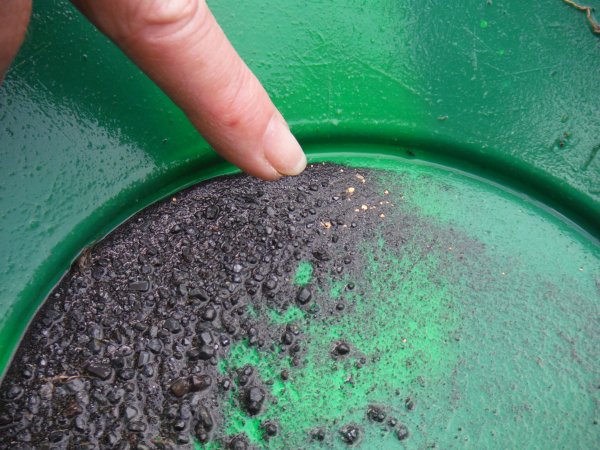
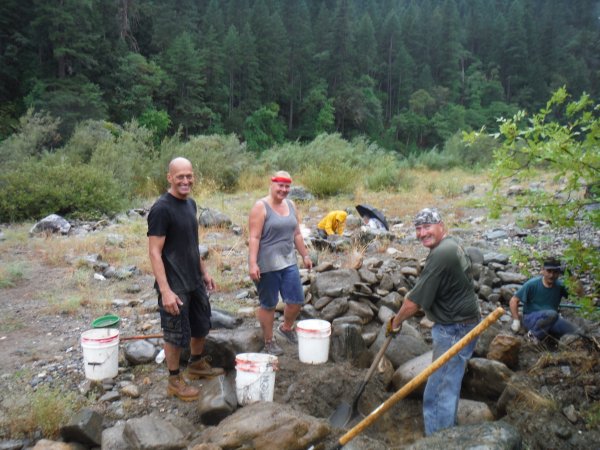

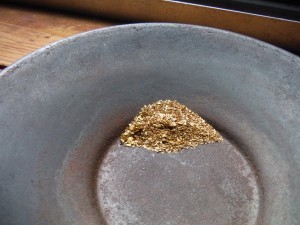
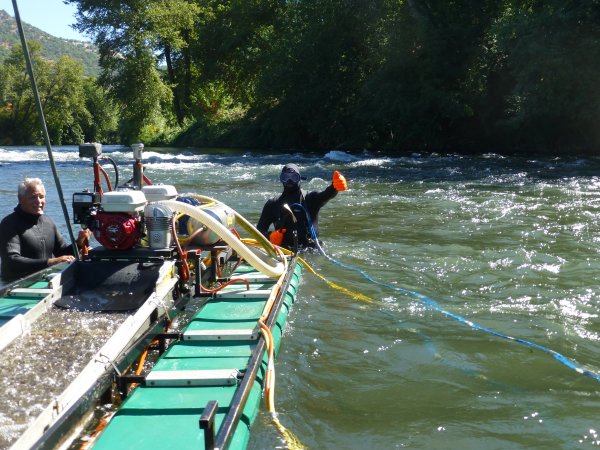 Because it was a busy season, Rich and I only averaged a few days a week mining for our own gold. This began down on our new
Because it was a busy season, Rich and I only averaged a few days a week mining for our own gold. This began down on our new 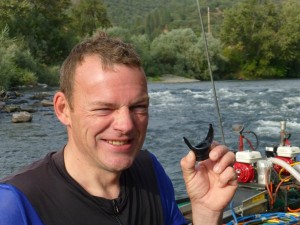
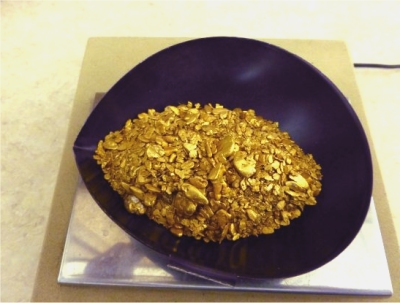
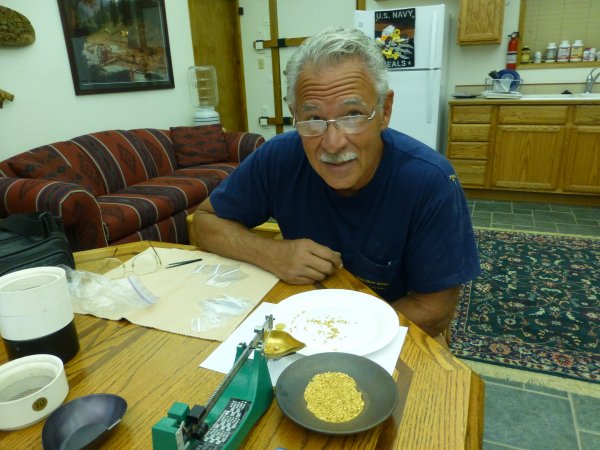
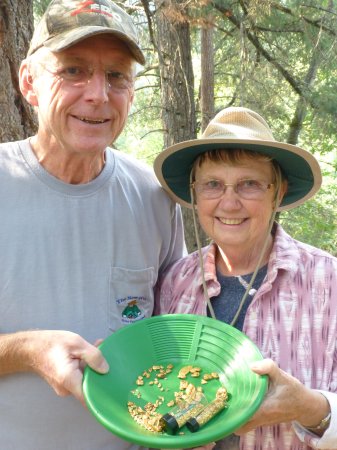
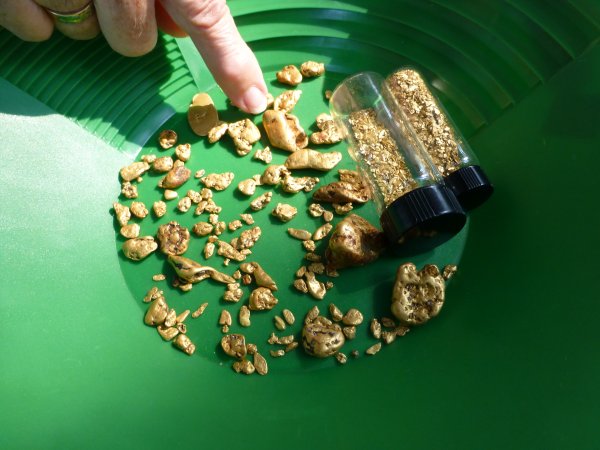
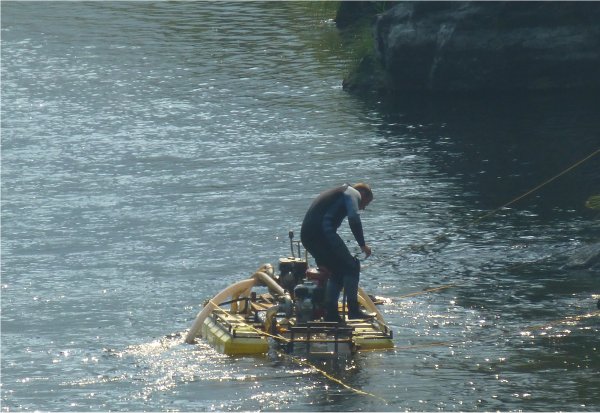
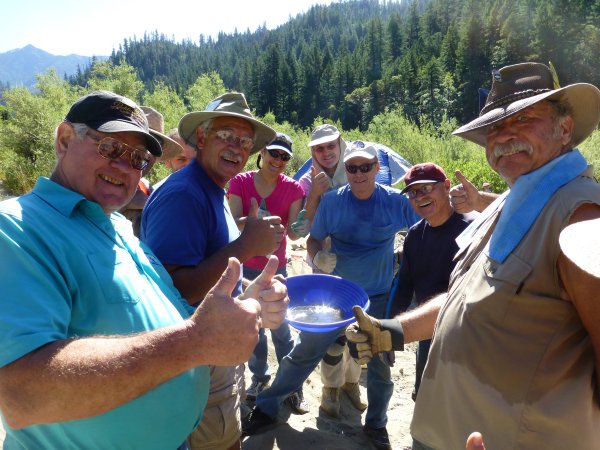
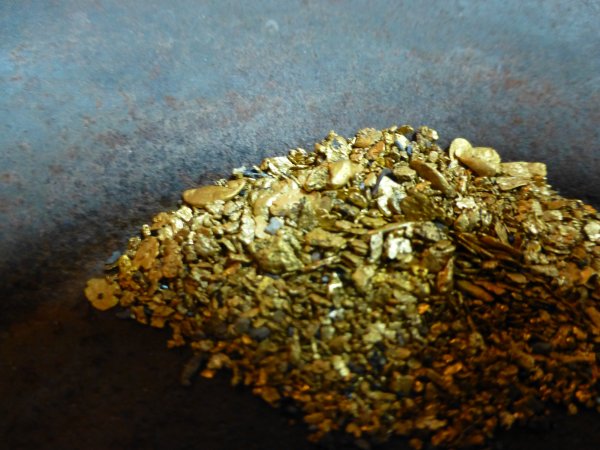
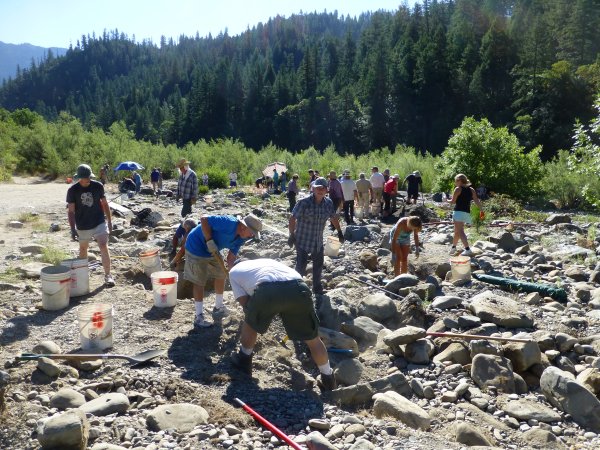

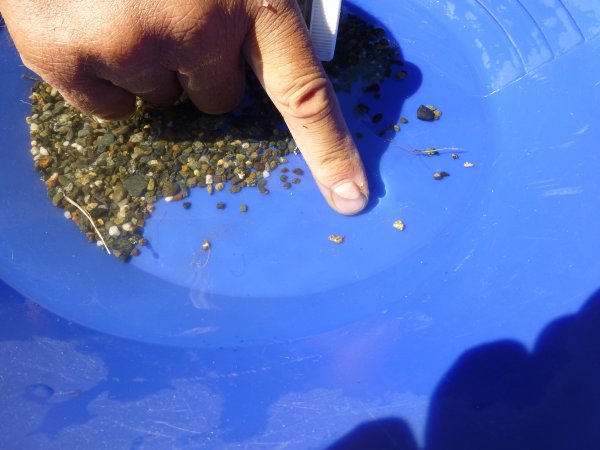

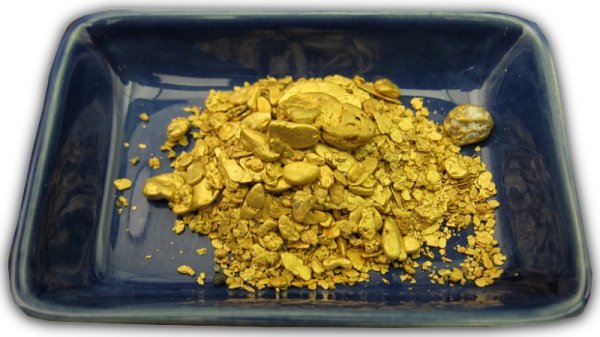 Giving away 3 ounces of Klamath River gold! The substantial response to our previous legal fund-raiser has prompted Richard Krimm and me to put up 3 ounces of the gold we have mined on the Klamath River this season for the next drawing prizes.
Giving away 3 ounces of Klamath River gold! The substantial response to our previous legal fund-raiser has prompted Richard Krimm and me to put up 3 ounces of the gold we have mined on the Klamath River this season for the next drawing prizes. 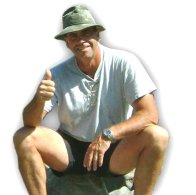
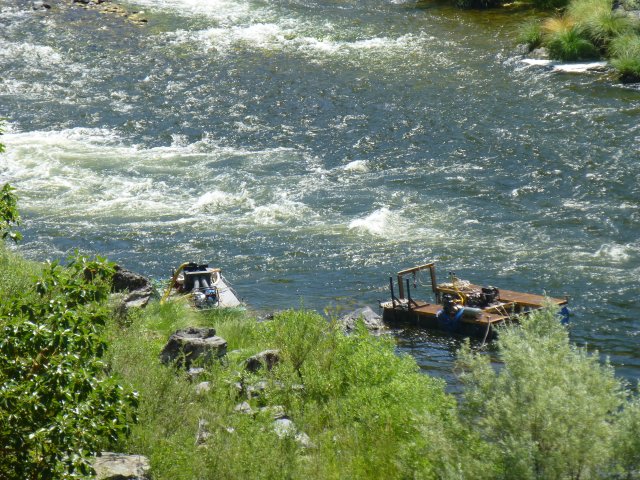
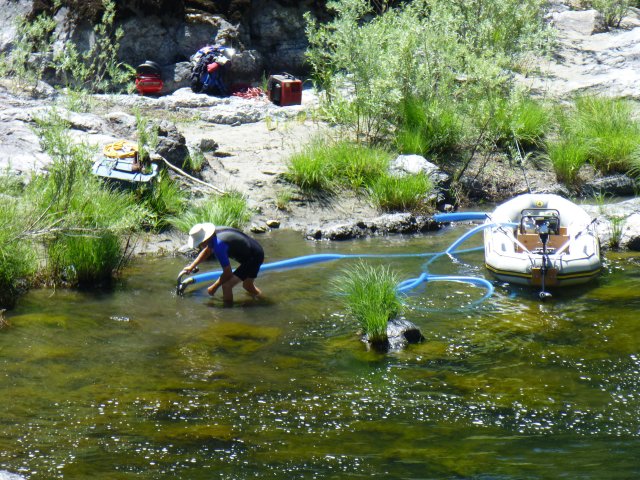

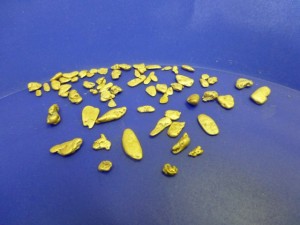


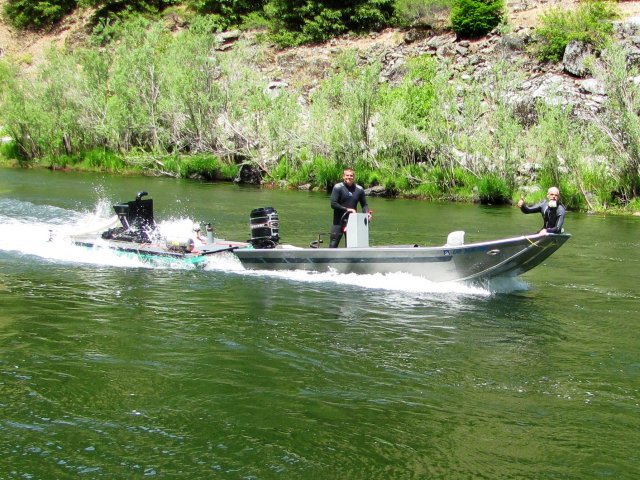



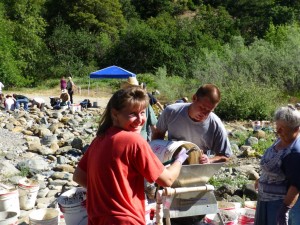
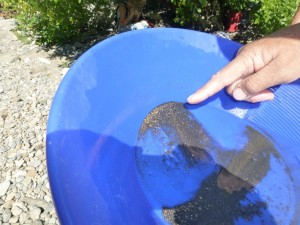

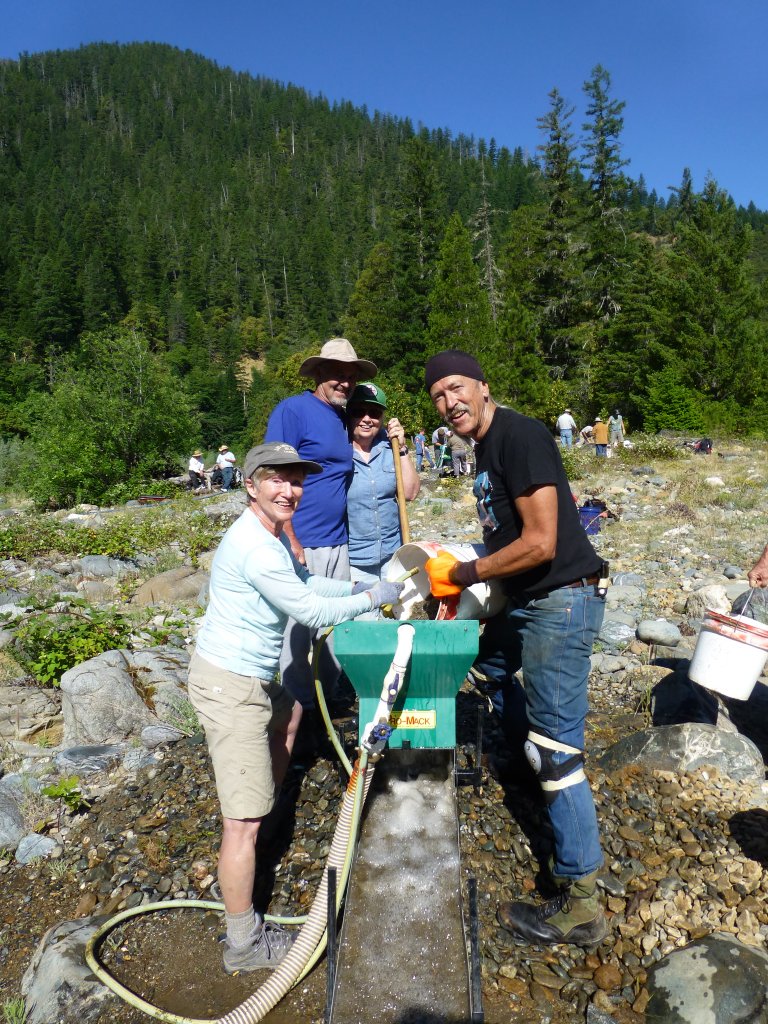
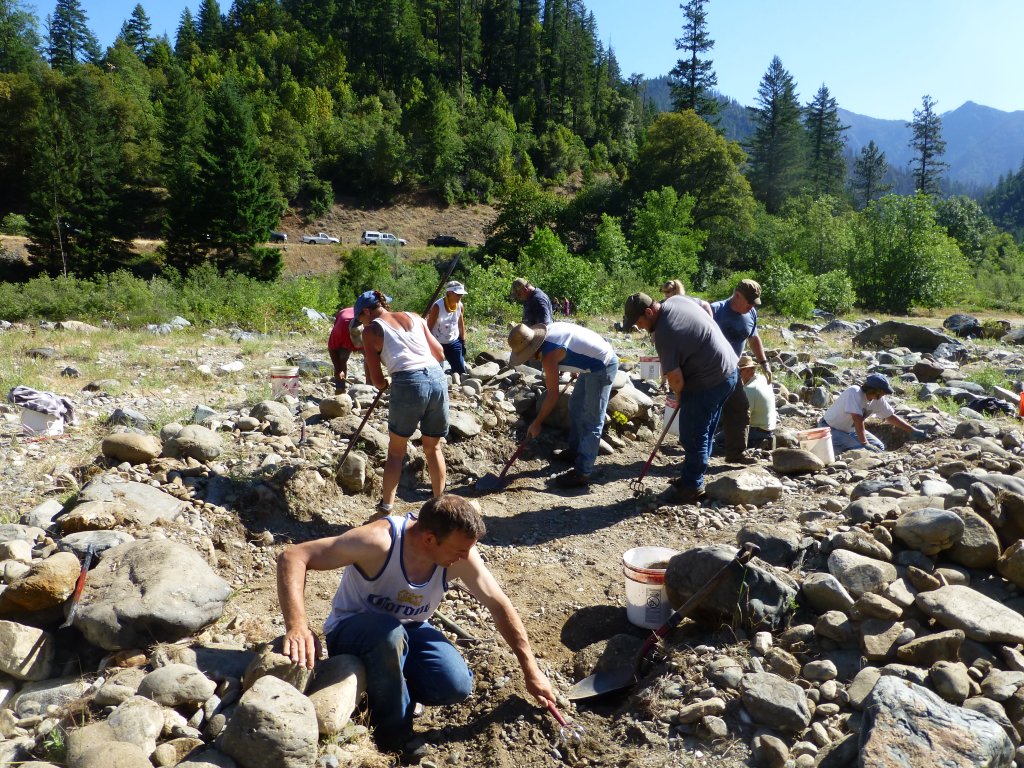
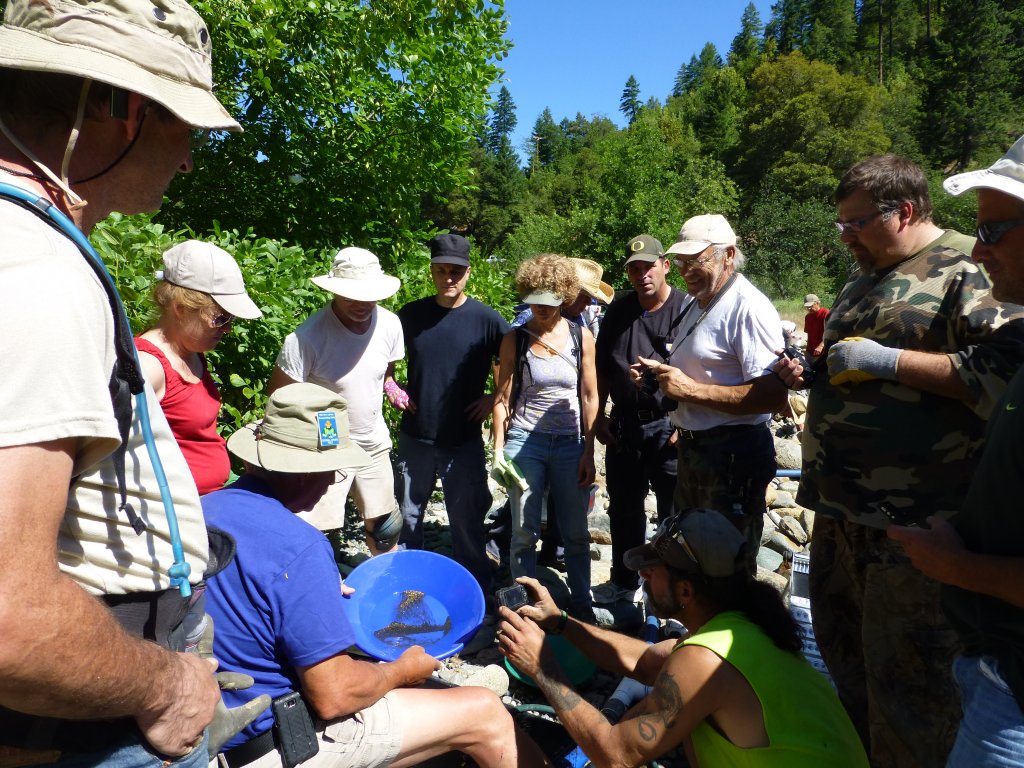
 Everyone had a good time, and we recovered twelve pennyweights of beautiful gold while feeding three high-bankers for about three hours on Sunday morning. This included nine nice gold nuggets.
Everyone had a good time, and we recovered twelve pennyweights of beautiful gold while feeding three high-bankers for about three hours on Sunday morning. This included nine nice gold nuggets.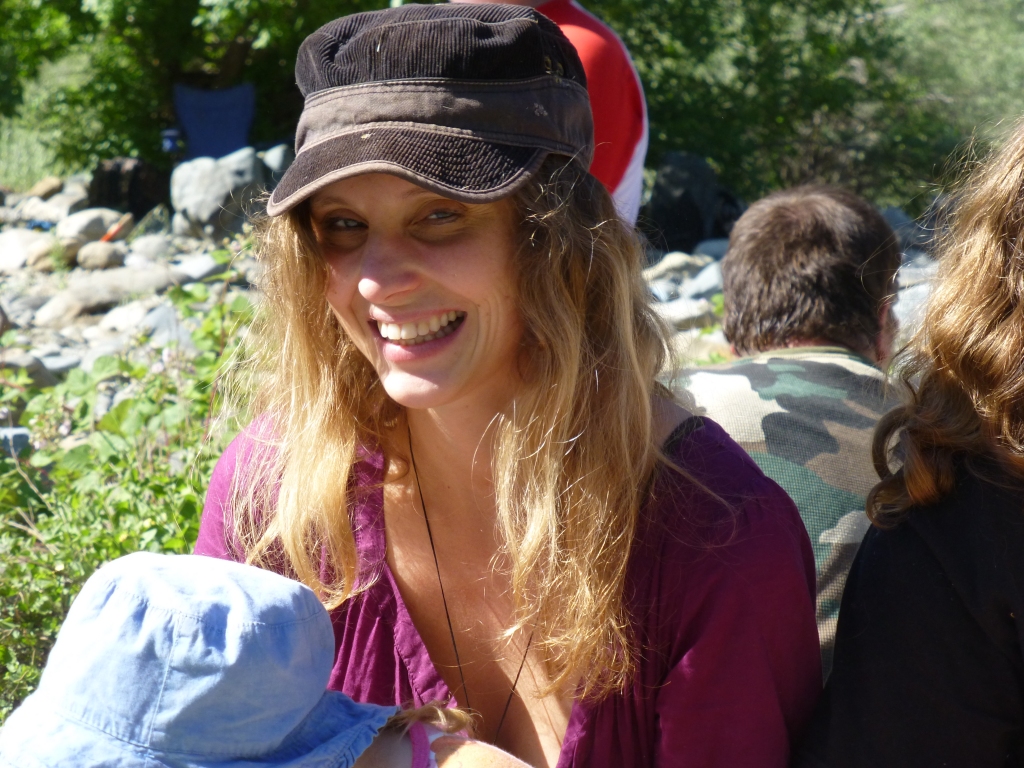

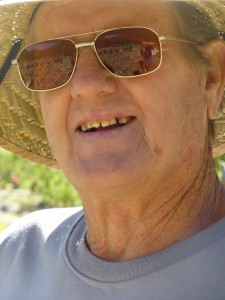 The U.S. Forest Service (USFS) has been mostly invisible during the past month. However, unless we have an active fire season (which is definitely possible), I am predicting they will start to come around to visit with prospectors at some point. I ask that you
The U.S. Forest Service (USFS) has been mostly invisible during the past month. However, unless we have an active fire season (which is definitely possible), I am predicting they will start to come around to visit with prospectors at some point. I ask that you 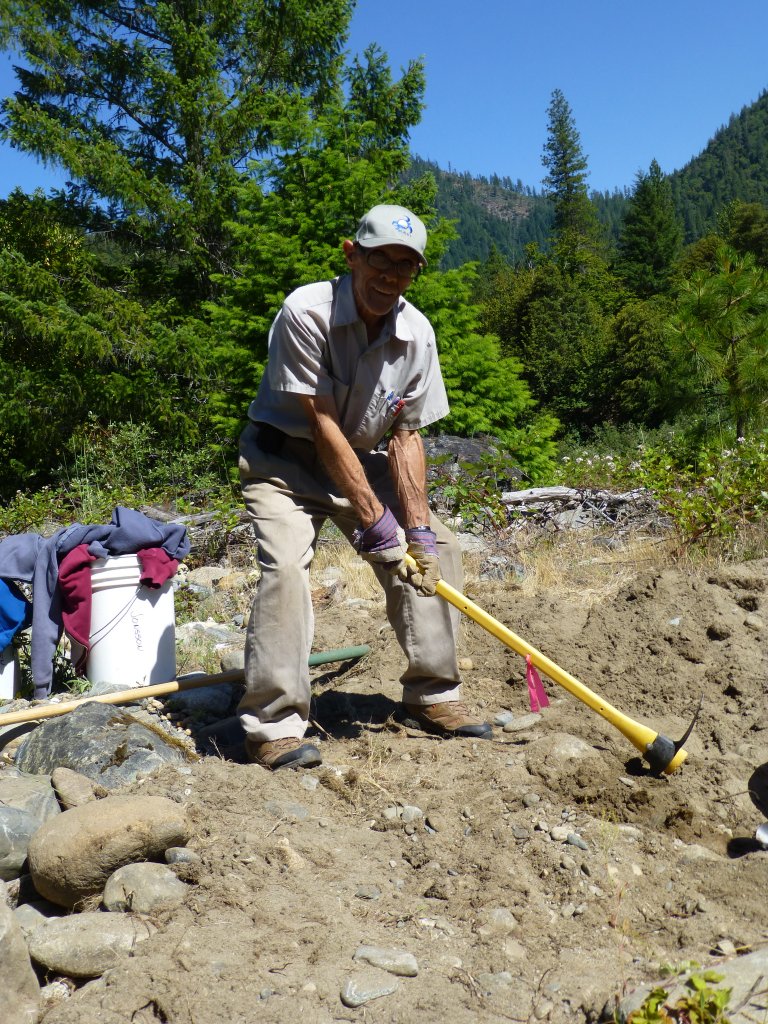
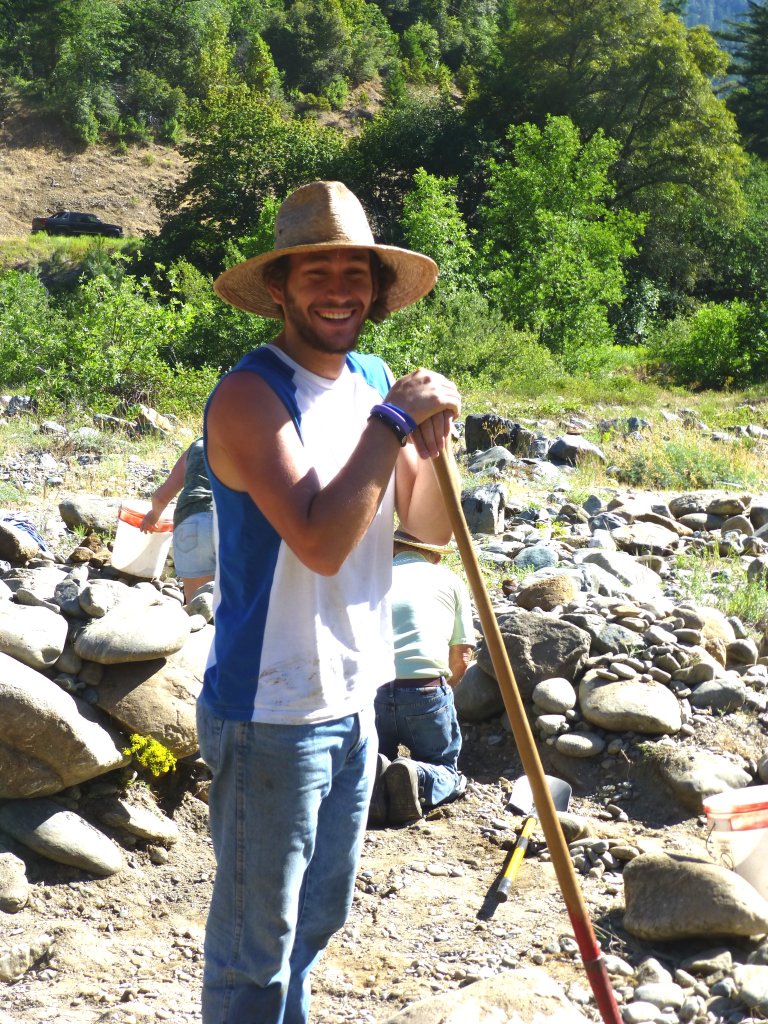
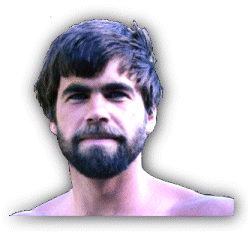

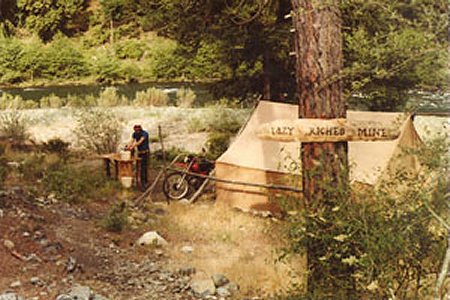
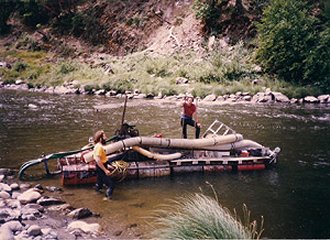
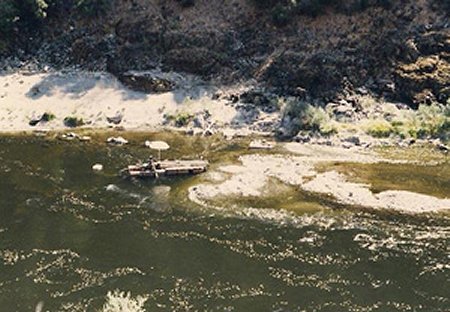
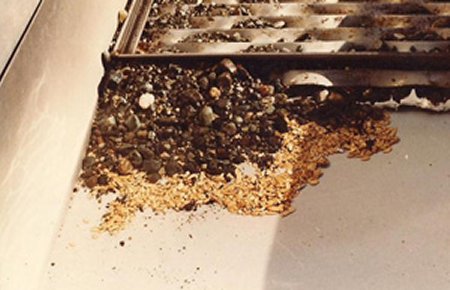 The feeling was like being late to the party! Even though that was just the beginning of the bigger party.
The feeling was like being late to the party! Even though that was just the beginning of the bigger party.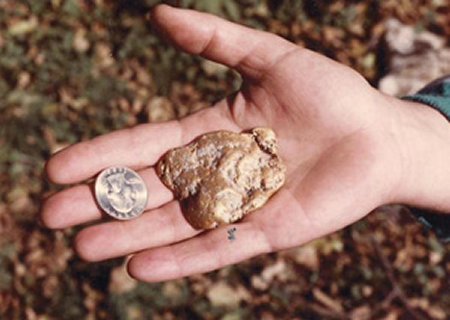
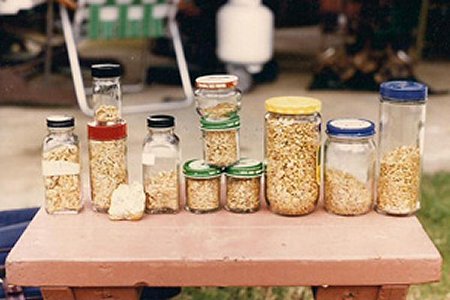
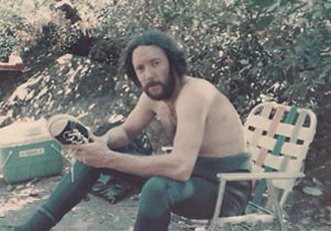
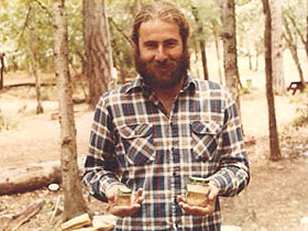
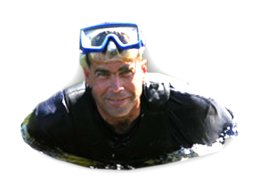
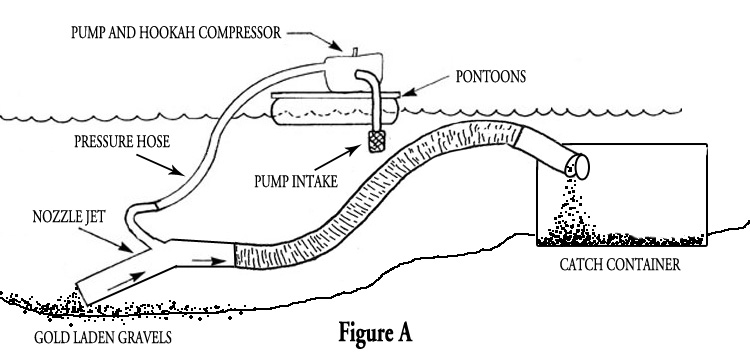
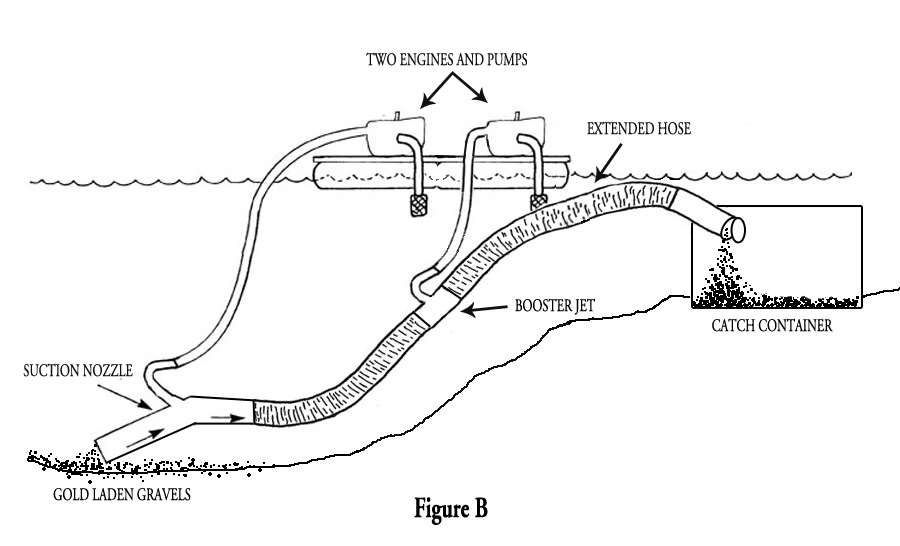
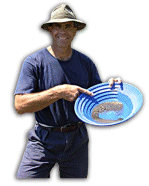

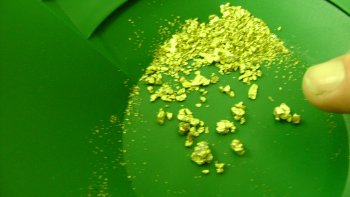
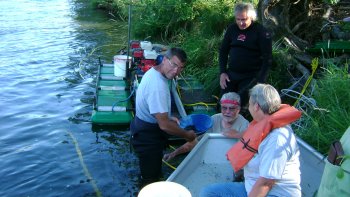
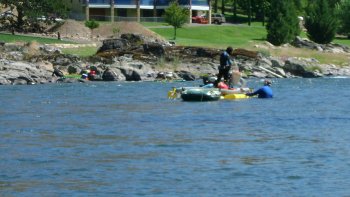
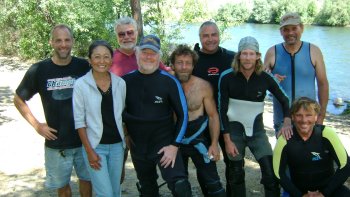
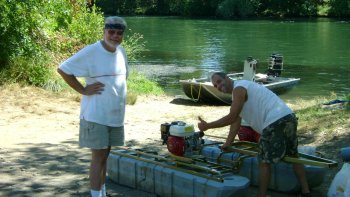
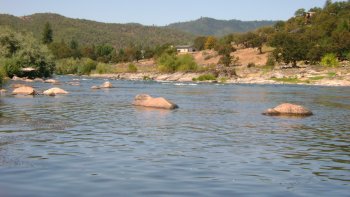
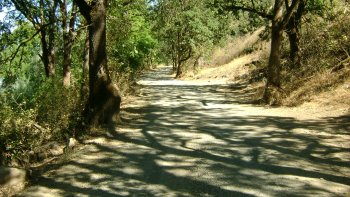
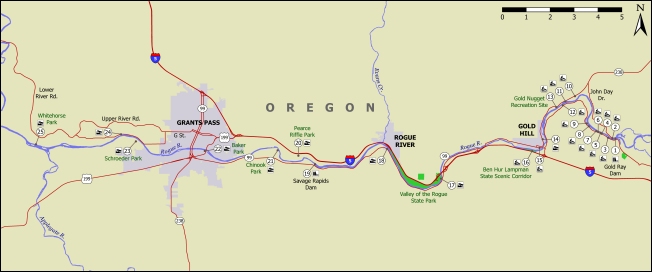
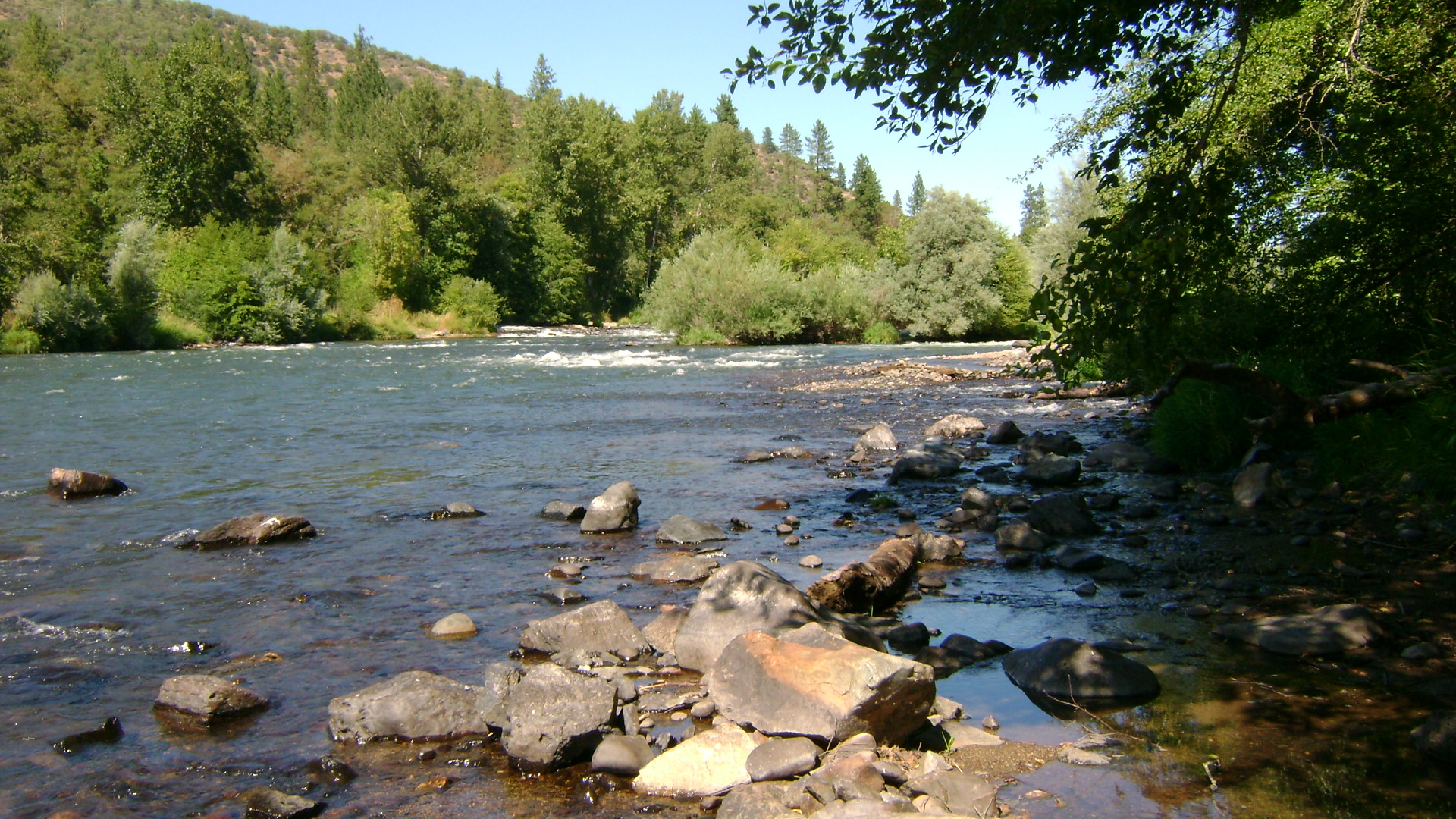
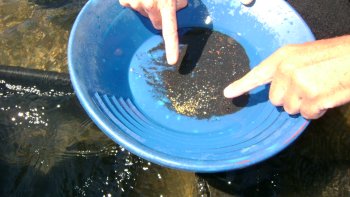
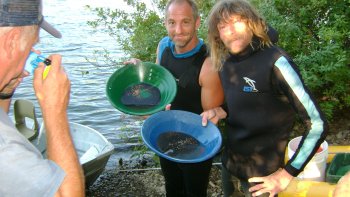 We discovered to our amazement that even though the Rogue is a wide river like the Klamath, you generally do
We discovered to our amazement that even though the Rogue is a wide river like the Klamath, you generally do 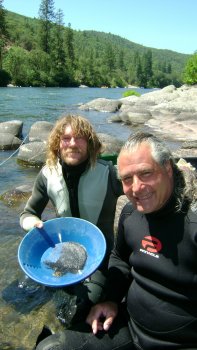

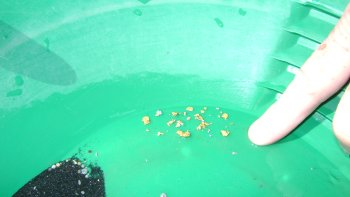
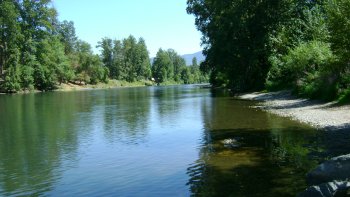
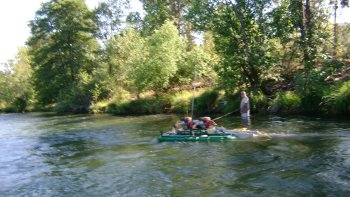
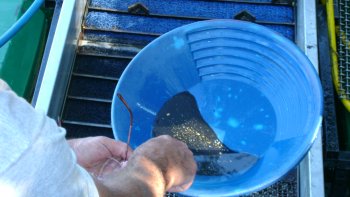
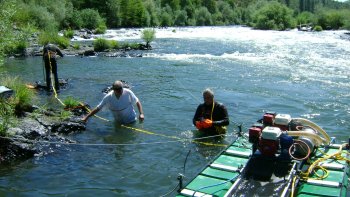
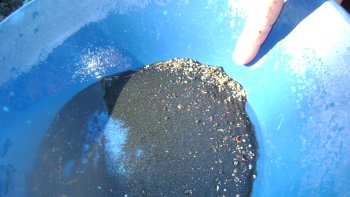
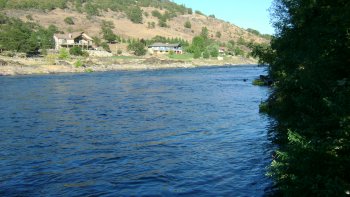
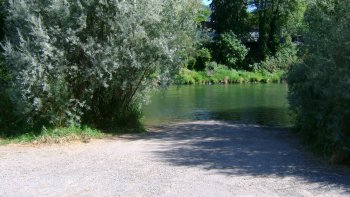
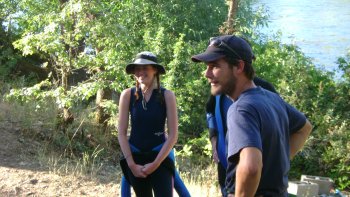
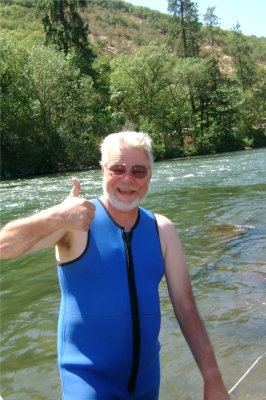
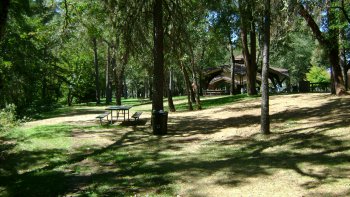
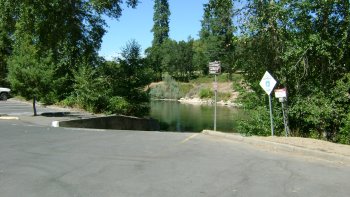

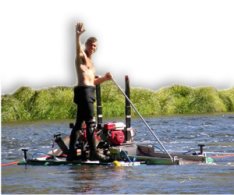
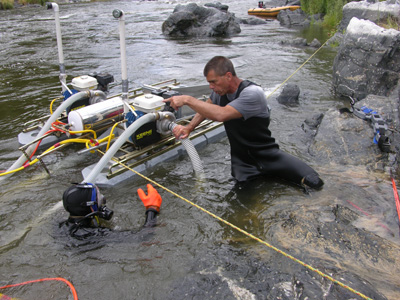
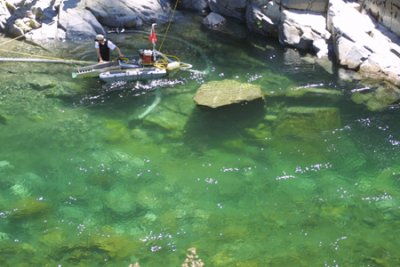
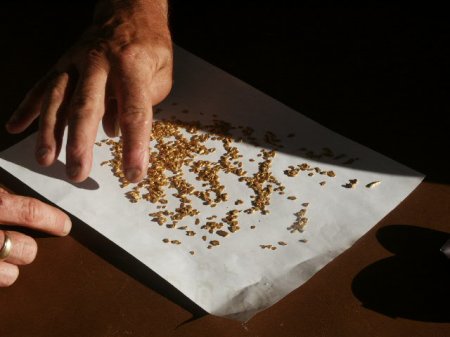 In
In 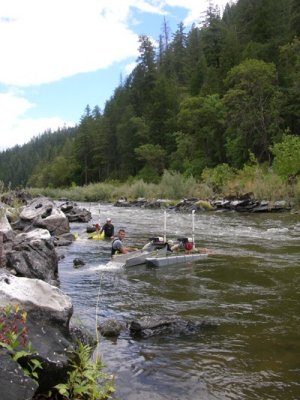 Several years then quickly passed by while the deposits we found during the
Several years then quickly passed by while the deposits we found during the 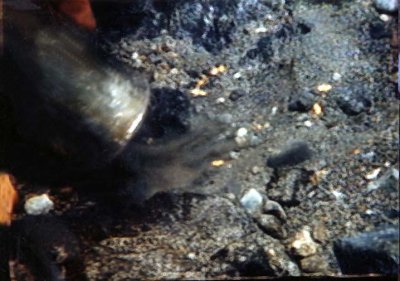 Since we were not using a
Since we were not using a 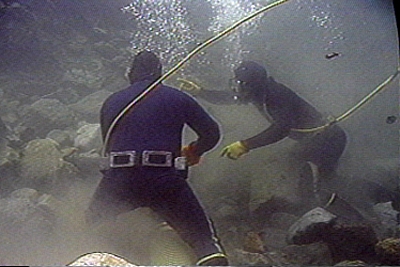 Dredging under a five-ton boulder (underwater estimated weight) and trying to calculate just how much you can take out to loosen it up enough to roll, without taking so much that it rolls in on top of you, is also a dangerous game. We call these boulders “Loomers.” It is a very high-risk job, because it is
Dredging under a five-ton boulder (underwater estimated weight) and trying to calculate just how much you can take out to loosen it up enough to roll, without taking so much that it rolls in on top of you, is also a dangerous game. We call these boulders “Loomers.” It is a very high-risk job, because it is 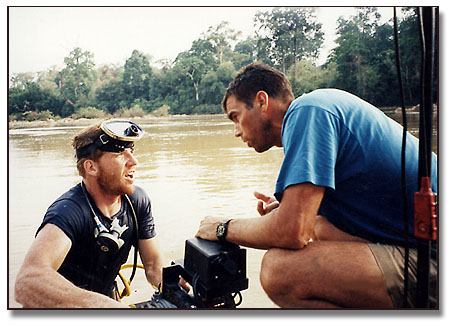 So I did not have my full attention on the state of the bedrock wall that was hanging over me. I noticed that it was fractured and the cracks were big. The problem was that we were dredging under a cave-like overhang of bedrock on the side of the river. We just had our best production days right behind us. I was watching out for big rocks on the working face, and I was paying a lot of attention to the gold I was seeing on the bedrock!
So I did not have my full attention on the state of the bedrock wall that was hanging over me. I noticed that it was fractured and the cracks were big. The problem was that we were dredging under a cave-like overhang of bedrock on the side of the river. We just had our best production days right behind us. I was watching out for big rocks on the working face, and I was paying a lot of attention to the gold I was seeing on the bedrock!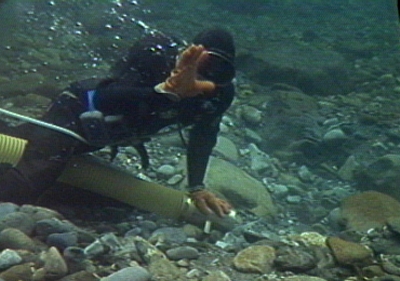 I sincerely believe that if it is at all possible, it is best to stay in the immediate vicinity of a location in which you have suffered severe injury or fear until the immediate shock wears off. I feel the body and mind will heal itself faster, and I also don’t like to leave right away because it leaves me feeling like I am running away. I could see by the look in my partner’s eyes that he did not approve, but I insisted.
I sincerely believe that if it is at all possible, it is best to stay in the immediate vicinity of a location in which you have suffered severe injury or fear until the immediate shock wears off. I feel the body and mind will heal itself faster, and I also don’t like to leave right away because it leaves me feeling like I am running away. I could see by the look in my partner’s eyes that he did not approve, but I insisted.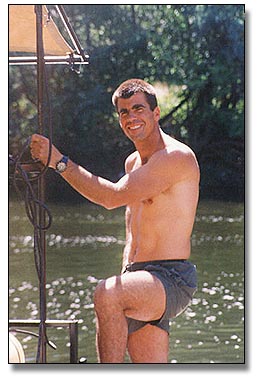 And now? I have dropped back on the pay-streak and have incorporated
And now? I have dropped back on the pay-streak and have incorporated 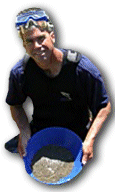
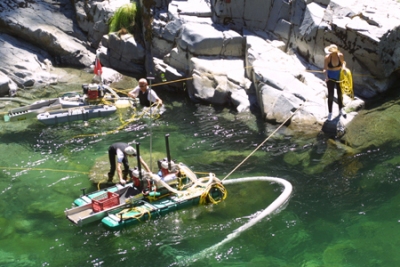

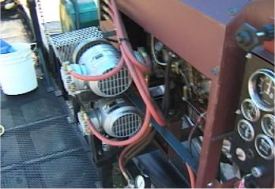 Most intermediate and larger-sized gold dredges come with built-in hookah-air systems. These attach to the same engine that powers the water pump. As demonstrated in the following video segment, air for breathing underwater is generated by an air compressor, passes down through an air line, and provides air to a diver through a regulator, similar to what is used by SCUBA divers:
Most intermediate and larger-sized gold dredges come with built-in hookah-air systems. These attach to the same engine that powers the water pump. As demonstrated in the following video segment, air for breathing underwater is generated by an air compressor, passes down through an air line, and provides air to a diver through a regulator, similar to what is used by SCUBA divers: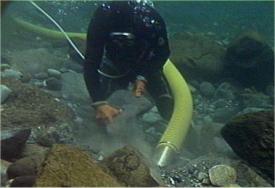 The
The 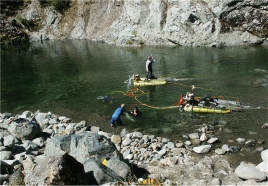
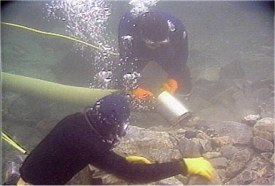
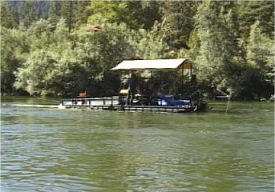
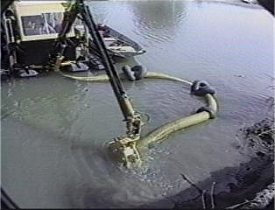 A cutter-head will just get bogged down (and damaged) in a normal
A cutter-head will just get bogged down (and damaged) in a normal  If you want to do serious excavations with a suction dredge, you must leave the opening of the suction-nozzle as large in diameter as possible, while still reducing it enough to eliminate un-necessary
If you want to do serious excavations with a suction dredge, you must leave the opening of the suction-nozzle as large in diameter as possible, while still reducing it enough to eliminate un-necessary 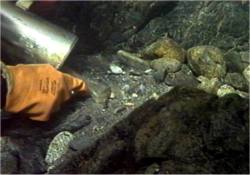
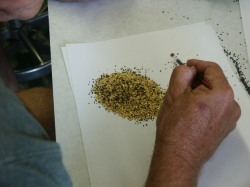
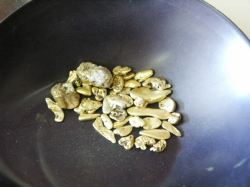
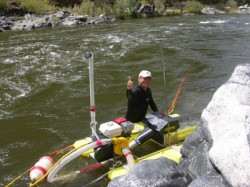 A gold-dredger has an advantage, in that he or she is able to float equipment where he or she wants it to go, sucking up gravel (sampling) from various strategic areas. This is much easier than having to carry equipment around and set it up in each new area, as is required in conventional mining.
A gold-dredger has an advantage, in that he or she is able to float equipment where he or she wants it to go, sucking up gravel (sampling) from various strategic areas. This is much easier than having to carry equipment around and set it up in each new area, as is required in conventional mining.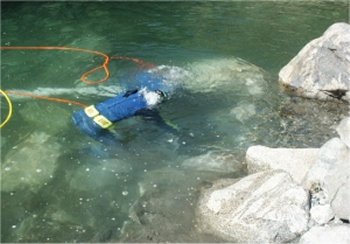 In fact, most of the work associated with suction dredging involves the organization and movement of cobbles and (sometimes)
In fact, most of the work associated with suction dredging involves the organization and movement of cobbles and (sometimes) 



